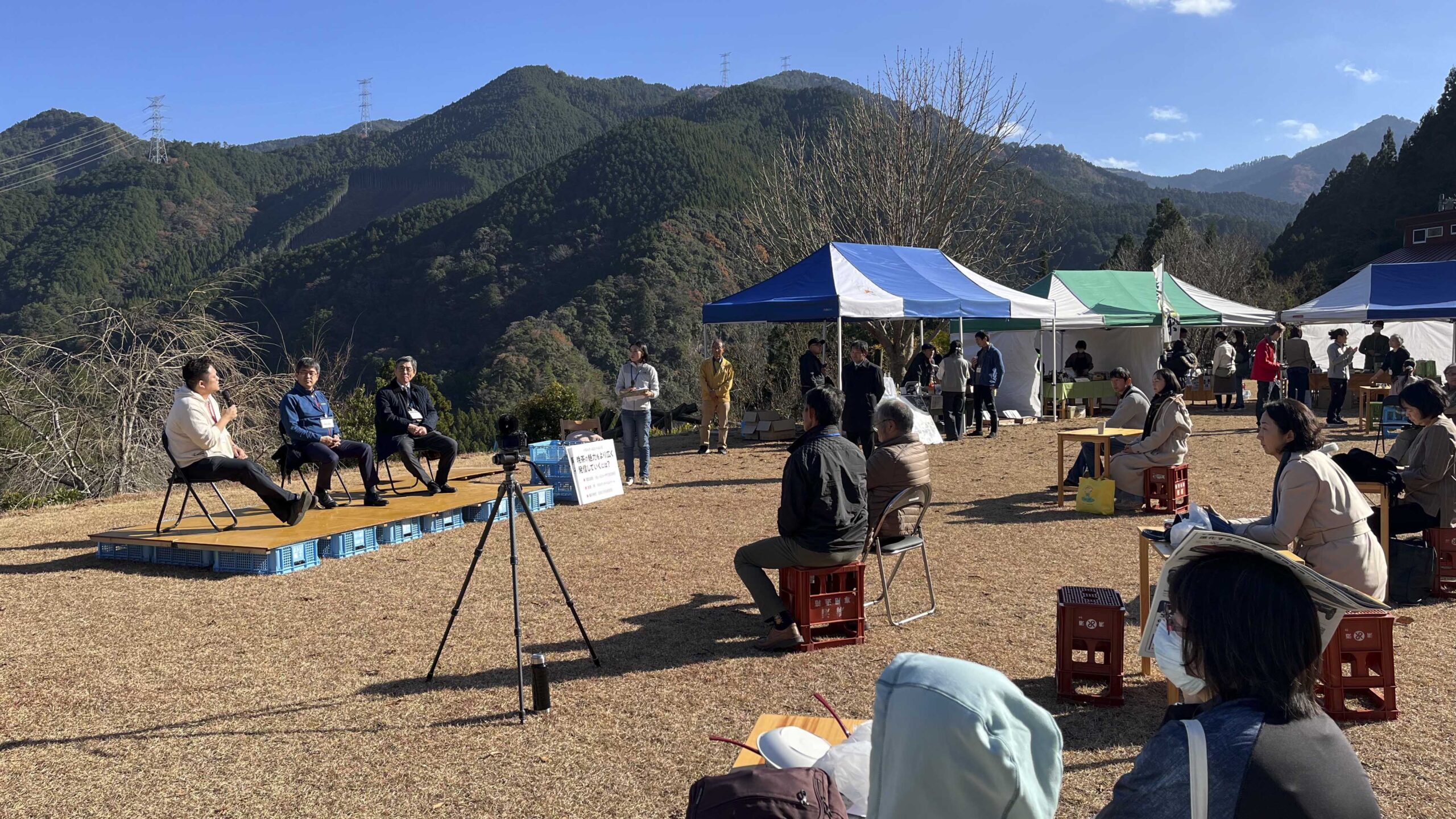The Kamikatsu Awabancha Association organized the Awabancha Festival on the 10th of December on the grounds of the unique recycling centre, zero-waste hotel and community space of Kamikatsu village. There were several stalls, many run by the farmers themselves, and a couple of local cafes and bakeries selling their goods. A local awabancha and rice farmer served awabancha ochazuke made with local ingredients. It was delicious! You could even find awabancha ice cream in a nearby shop outside of the event space. Later in the day, there were a couple of panel discussions among the farmers. It was interesting to see how they process the tea a bit differently, and that is another way to work together to popularize awabancha. Villages like Kamikatsu
have a strong community relationship, and you could feel how the entire Kamikatsu village poured in to help in any way at the event. Awabancha is a post-fermented tea from Tokushima prefecture in the Kamikatsu and Naka villages, processed using tea trees grown by the family or old forest-grown tea trees. It was usually processed at home and consumed by each family.
During the event, I could see mainly Zairai and Yabukita being used and a farmer selling Sayamakaori awabancha out of a big cardboard box by the weight. Each family has been handed down a slightly different recipe, branching out from the general production method. It is also said that the bacteria housed in each farmer’s sheds and tools are different, including the ones carried over from the harvesting site and plant itself; and so the flavor of the several families producing the tea is different too. A quick overview of the awabancha process would begin after harvest in summer. Tea leaves are separated from the branches, then they are boiled, and put into a rolling machine that crushes and bruises the leaves. Then, they are gathered into a wooden barrel, pressed to remove air bubbles, left to ferment and then dried. The fermentation process lasts up to a month. During this time, the tea is fermented by lactic acid bacteria. You can read a longer post about that by the Tea Fellow Sara Cherchi here.
Awabancha is usually simmered for a couple of minutes in a kettle, but it also brews nicely in a teapot. Several farmers were serving it as a cold brew. A common guideline given by the farmers was to use around 10 grams in 1 liter of water and later adjust to your desired strength. Then add almost boiling water, brew for 3-5 minutes and enjoy!
*The text and image is by our Tea Fellow Pau Valverde Molina. You can follow Pau on his intsagram page.

